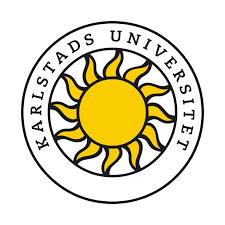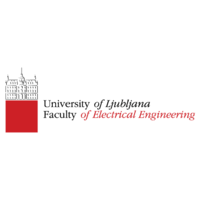Coordinator

- Dr. Emmanuel Stratakis
- Dr. Stella Maragkaki
- Dr Kyriaki Savva
- Andreas Michael, BSc
- Dr. Ioannis Konidakis
ROLE IN PROJECT: Development of advanced graphene-based electrodes and interlayers for CIGS/Perovskite solar devices upon establishing in-situ low cost, room temperature, fast and facile laser processing protocols. FORTH will also be responsible for the project management, coordination and dissemination.
Read more
FORTH is the largest and most successful Research Institution in Greece (1125 personnel) incorporating 7 Institutes. FORTH will participate and coordinate the project with the Ultrafast Laser Micro- and Nano-processing Laboratory (ULMNP lab) of the Institute of Electronic Structure and Laser (FORTH-IESL). ULMNP is a multi-disciplinary scientific laboratory that focuses its research on fundamental and applied issues related to materials science and technology and laser interactions with matter. The group has extensive expertise in the field of ultrafast laser processing of GRMs, comprising highly skilled scientists who will carry out the proposed objectives and tasks described in the proposal. In the last decade, emphasis has been placed on the development of in-situ laser processes for the fabrication of Graphene-based electrodes and interlayers for organic and PSCs, leading to high impact publications (relevant refs below). The ULMNP facilities comprise state-of-the-art amplified ultrashort-pulsed laser systems, as well as instrumentation for materials research, analytical measurements and characterization.
Partners
ROLE IN PROJECT: Development of wide bandgap perovskite solar cells. Integration of these devices into tandem architectures with the incorporation of graphene oxide-based interlayers. Upscaling of lab-scale devices to modules. Structural and morphological characterization and electrical measurements.
Read more
IMEC is one of the largest independent R&D centers worldwide in the field of nano-electronics, health, ICT and Energy. IMEC has more than 3500 employees for a turnover of 550 M€ and is known for its balance of basic research and application-oriented research leveraging its unique infrastructure. The PV activity is developing low cost, scalable and high efficiency solar cell technologies, and the key areas of attention are thin-film solar cells (in the frame of Solliance) and silicon-based solar cells. This research is using the vast know-how of IMEC on semiconductor physics, processing and analysis. The Thin-Film PV group has a track record of over 15 years. It started in the field of organic solar cells but has now its main activities based on perovskite and chalcogenide thin film solar cells. In the case of perovskite thin film solar cells, this group has attracted a lot of attention with its fast progress in this field with single cell efficiencies of +20% and world-record certified module efficiency of 12.5%, as well as a recently reported world’s first 4 cm² module-on-cell perovskite/silicon stack with a power conversion efficiency of 25.3%, outperforming the standalone silicon solar cell. Similarly, CIGS/Perovskite mechanically stacked tandem solar cell has been demonstrated whereby the single junction CIGS efficiency was boosted from 16.7% to a record high 24.6% tandem efficiency.
ROLE IN PROJECT: Development of low bandgap chalcogenide solar cells. Integration of these devices into tandem architectures with the incorporation of graphene oxide-based interlayer. Structural and morphological characterization and electrical measurements.
Read more
Hasselt University is a young, dynamic center of expertise for teaching, research and service provision, and has faculties in Sciences, Engineering Technology, Medicine and Life Science, Law, Business Economics, and Architecture and Arts. In the Times Higher Education Ranking, it is No 15 of best small universities (universities with less than 5000 students) and No 84 of best young universities worldwide. IMO-IMOMEC is an associated lab from IMEC at the University of Hasselt (UHasselt). It concentrates its activities on renewable energy, material research for health care, and smart electronics. The ‘imo’ stands for the Institute for Materials Research of Hasselt University, located at the university campus. Hence IMO-IMOMEC PhD students actually perform their scientific research at IMEC. In the case of chalcogenide thin film solar cells, the research team targets innovation in terms of PV materials and solar cell architectures. PV material innovation focuses on the development, characterization and optimization of new materials for high-efficiency tandem devices and (transparent) PV windows. Solar cell architecture innovation focuses on the development of advanced three-dimensional thin film solar cell concepts (to enhance efficiency, cost and stability) stemming from Si PV, i.e. consisting of surface passivation layers and light management methods integrated into ultra-thin solar cells.
ROLE IN PROJECT: KAU will contribute with materials characterization studies. Using photoelectron spectroscopy (XPS) and X-ray absorption spectroscopy (XAS), the energy levels and their alignment across the tandem solar cell structure will be determined. The groups’ experience in interface engineering using surface functionalization will be useful in the project to achieve efficient charge transfer at interfaces. Local IR spectroscopy and compositional mapping at the nanoscale, using the newly installed AFM-IR (Nano-IR3) instrument, will be used to chemically characterize the functional groups on the GRMs. Additional characterisation of the GRM, as well as perovskite and CIGS stoichiometry will be done by a variety of X-ray microscopy and spectroscopy techniques available at synchrotron facilities. The morphology-performance-stability relations of the solar cells will be examined.
Read more
KAU is one of Sweden’s youngest universities. The materials physics group carries out research in surface physics, nanostructures, and in molecular materials for optoelectronics. The group has extensive experience with photoemission and absorption spectroscopy (UPS, XPS and XAS), which are carried out on campus and at synchrotron facilities. The group also have extensive expertise with conventional and state-of-art scanning probe microscopies (AFM and recently AFM-IR), as well as solar cell devices fabrication. The research group of Ellen Moons has particular interest in polymer and perovskite solar cells. During the last decade the research group has collected significant experience on carbon-based materials, such as fullerenes and graphene. By means of Near-Edge X-ray Absorption Fine Structure (NEXAFS) spectroscopy and FT-IR spectroscopy they have identified photo-induced degradation on the surface of thin films of these carbon-based materials, for instance due to photooxidation in air. This photodegradation of fullerene-based electron acceptor materials was identified one of the main causes of decreased photovoltaic performance in solar cells.
ROLE IN PROJECT: Modelling assisted design and optimisation of 2-T and 4-T tandem devices with GRM
Read more
The University of Ljubljana (“Univerza v Ljubljani”) – UL is the largest (>40.000 students) and the oldest university in Slovenia. The key persons involved in this project are members of the Laboratory of Photovoltaics and Optoelectronics (LPVO) at the Faculty of Electrical Engineering within UL. LPVO is a central research lab for photovoltaics (PV) and optoelectronics in Slovenia. Activities of LPVO cover material, device and system research and development in the field of PV and optoelectronics. The group has over 30-years experiences and broad expertise in device optoelectical modelling and simulation, including CIGS, Si, perovskite single-junction and multi-junction devices. Different solar cell and PV module characterization techniques have been developed in parallel (optical angular resolved spectroscopy, LBIC, EL, advanced outdoor monitoring systems).




